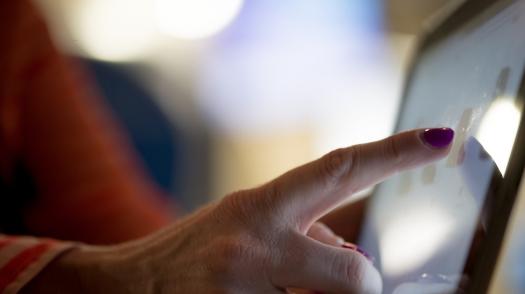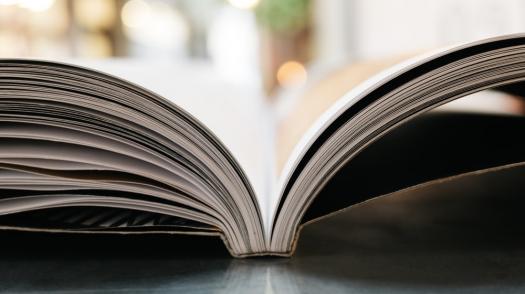At its simplest, outcome measures are used to find out how well a child’s rehabilitation is working.
The clinical staff around a child measure progress in different areas at regular time intervals.
This is done using different outcome measures, which we talk about in more detail below.1
Assessments are a different kind of ‘tool’ in that they are a snapshot of a child at that particular time.
They are a one-off look at a child’s strengths and needs to give clinical staff a better idea about what the next steps might be.
As well as being focused on an individual child, these measures and assessments help organisations like The Children's Trust identify the most effective ways of supporting other children in their rehabilitation.
These measures and assessments also help the wider healthcare community share ideas and information.
Why are there so many outcome measures and assessments?
This is because the clinical staff need different tools for different jobs. One outcome measure might look at how a child’s movement has progressed, while another might look at their speech.
There are so many different strands to a child’s rehabilitation that lots of different measures and assessments are used.
Which outcome measures and assessments will my child have?
All children will have the following measures completed:
- Rehabilitation Complexity Scale – fortnightly
- Functional Independence Measure + Functional Assessment Measure FIM+FAM on admission and discharge for children 8 years+
- Paediatric Evaluation of Disability Index on admission and discharge for children 7 years and under
- Northwick Park Dependency Score - Hospital - monthly
- Northwick Park Therapy Dependency – monthly
- Goal Attainment Scaling – part of initial assessment and usually reviewed 3 monthly
- Gross Motor Function Measure - monthly
- School Function Assessment – all school aged children
Additional measures and outcome assessments will be used depending on the individual child. Let’s look at them in more detail.
Assessment of Motor and Process Skills (AMPS)
This is used by occupational therapists to evaluate the performance of Activities of Daily Living (ADL). While this may sound complex, it’s actually about trying to gauge how well a child is able to do everyday things, such as wash and dress.
An occupational therapist will observe a child while they are doing something familiar that the child has chosen to do themselves. Examples might be pouring a drink, making muffins or a sandwich or going shopping.
The therapist will then assess a child on 16 different items for motor skills (how a child is able to move and use their hands eg reach, bend, grip, manipulate, coordinate) and 20 different process skills (eg sequencing and problem solving or starting and finishing task, sequencing, organising).
For more information, ask your occupational therapist.
British Picture Vocabulary Scale (BPVS)
This is used by speech and language therapists to assess a child’s receptive vocabulary. Our receptive vocabulary is the body of words we are able to understand when we hear them. It’s a little like a database.
For more information, ask your speech and language therapist.
Bruininks and Oseretsky Test 2 (BOT2)
This is a very physical test used by occupational therapists and physiotherapists for anyone from four to 21 years of age.
This test looks at ‘gross motor skills’, those that use the large muscle groups in the body for actions like walking, running or crawling.
It also looks at ‘fine motor skills’, which are the more difficult, delicate movements of our hands, feet and lips.
The test also assesses children on their balance, co-ordination, strength and how well they can move.
For more information, ask your occupational therapist or physiotherapist.
Clinical Evaluation of Language Function (CELF)
Used by speech and language therapists to assess language skills for children aged between five and 17 years.
Assesses the child’s Core Language, Receptive Language, Expressive Language, Language Structure, Language Content, Language Memory, and Working Memory.
For more information on these terms, ask your speech and language therapist.
Detailed Assessment of Speed of Handwriting (DASH)
Just as it sounds, this is used by occupational therapists to test how fast children aged between nine and 17 years are able to write.
Developmental Test of Visual Motor Integration (VMI)
This is used by occupational therapists to test a child’s ability to copy and match geometric shapes. It assesses whether the child can translate visual information into the movements required for drawing shapes.
This is an important skill for writing and drawing. The child is asked to draw and match shapes, starting with simple shapes and gradually becoming more difficult.
It is for children and young people aged between two and 18 years.
For more information, ask your occupational therapist.
Functional Independence Measure and Functional Assessment Measure (FIM+FAM).
As its title suggests, this is about evaluating a child’s ability to act independently and is used from eight years of age.
You’ll see from the list below that it looks at real-life situations such as shopping, play and preparing meals.
This is a ‘multi-disciplinary’ measure, ie one that assesses lots of different things. It assesses: eating, swallowing, grooming, bathing dressing, using the toilet, getting on and off chairs, in and out of cars, moving about, using stairs, understanding, talking, reading, writing, social interaction, emotional status, adjustment to limitations, play, leisure, solving problems, memory, orientation, concentration, safety awareness, shopping, preparing meals, doing laundry and housework, shopping and managing money.
For more information, ask your coordinating therapist.
Goal Attainment Scaling (GAS)
This is another ‘multi-disciplinary’ measure. Children and families are very much involved in this measure. They and the therapist will set goals for the individual child and measure the extent to which they have been achieved.
For more information, ask your coordinating therapist.
Gross Motor Function Measure (GMFM)
Used by physiotherapists to observe the child’s gross motor function in a number of different areas such as lying, sitting, walking, running, jumping and carrying things.
For more information, ask your physiotherapist.
Hawaii Early Learning Profile (HELP)
This assessment looks at: Thinking skills, language, gross motor (big movements), fine motor (small movements), social, and self-help skills from birth to six years.
For more information, ask your occupational therapist.
Measures of Processes of Care (MPOC)
This measure is completed by families themselves. Organisations like The Children’s Trust will ask families to comment on how family-centred its services are.
Questions relate to the following areas: enabling and partnership, providing general information, providing specific information about the child, coordinated and comprehensive care for the child and family and respectful and supportive care.
For more information, ask your coordinating therapist.
National Curriculum (NC)
Most children will come into contact with the National Curriculum. It assesses levels of attainment in subjects for school-aged children.
The subjects children in England are obliged to take are: English, maths, art and design, design and technology, geography, history, information and communication technology (ICT), music, physical education and science.
For more information, ask your child’s teacher.
Northwick Park Therapy Dependency Assessment- Hospital (NPTDA)
This assessment aims to work out what kind of help children will need from nurses, and what kind of skills those nurses should have. For more information, ask your nurse.
Northwick Park Therapy Dependency Score (NPTDS)
This score measures how much therapy input and time a child receives in several key areas:
Physical handling programmes, basic functions, activities of daily living, thinking and learning, behaviour, family support, discharge planning, indirect interventions (such as meetings and reports about the child), additional activities (groups) and special facilities, investigations and procedures.
For more information, ask your coordinating therapist.
Pediatric Evaluation of Disability Index (PEDI)
This is used by occupational therapists, physiotherapists and speech and language therapists for children aged between six months and seven years to assess self-care, mobility and social function. Our ‘social functions’ include things like the way we speak with others and the way we solve problems.
For more information, ask your coordinating therapist.
Rehabilitation Complexity Scale (RCS)
Another multi-disciplinary measure, covering basic care and support, skilled nursing needs, therapy needs and medical needs.
For more information, ask your coordinating therapist.
School Function Assessment (SFA)
The School Function Assessment is a judgment-based (questionnaire) assessment which looks at how a student manages in school.
It assesses children on how they’re able to complete physical and cognitive (thinking) academic tasks as well as the more social aspects of school.
For more information, ask your coordinating therapist.
Wessex Head Injury Matrix (WHIM)
Assesses children who are in, and emerging from, a coma and in the vegetative and minimally conscious states. It looks at communication, cognition and social interaction.
For more information, ask your occupational therapist.
Rivermead Behavioural Memory Test (RBMT)
Assesses the kind of memory tasks people use in daily life.
Children are asked to remember a number of different things. They might be shown pictures and asked to remember the name, or told to remember to ask about a hidden packet at the end of the assessment.
For more information, ask your occupational therapist.
Sensory Modality Assessment and Rehabilitation Techniques (SMART)
This assesses the levels of awareness, as well as functional, sensory and communicative abilities of people in vegetative or minimally-conscious states.
These techniques were designed with adults in mind.
For more information, ask your occupational therapist.
Talking Mats
This is a simple picture-based communication device, involving sets of symbols which can be used for goal setting.
It enables children who cannot communicate easily to express their ideas about the things they would like to work on in therapy by placing symbols on a mat to indicate their choices.
For more information, ask your speech and language therapist.
Therapy Outcome Measure (TOM)
Therapists use this measure to describe a child’s abilities and difficulties in four areas: impairment, activity, participation and well-being.
For more information, ask your coordinating therapist.


